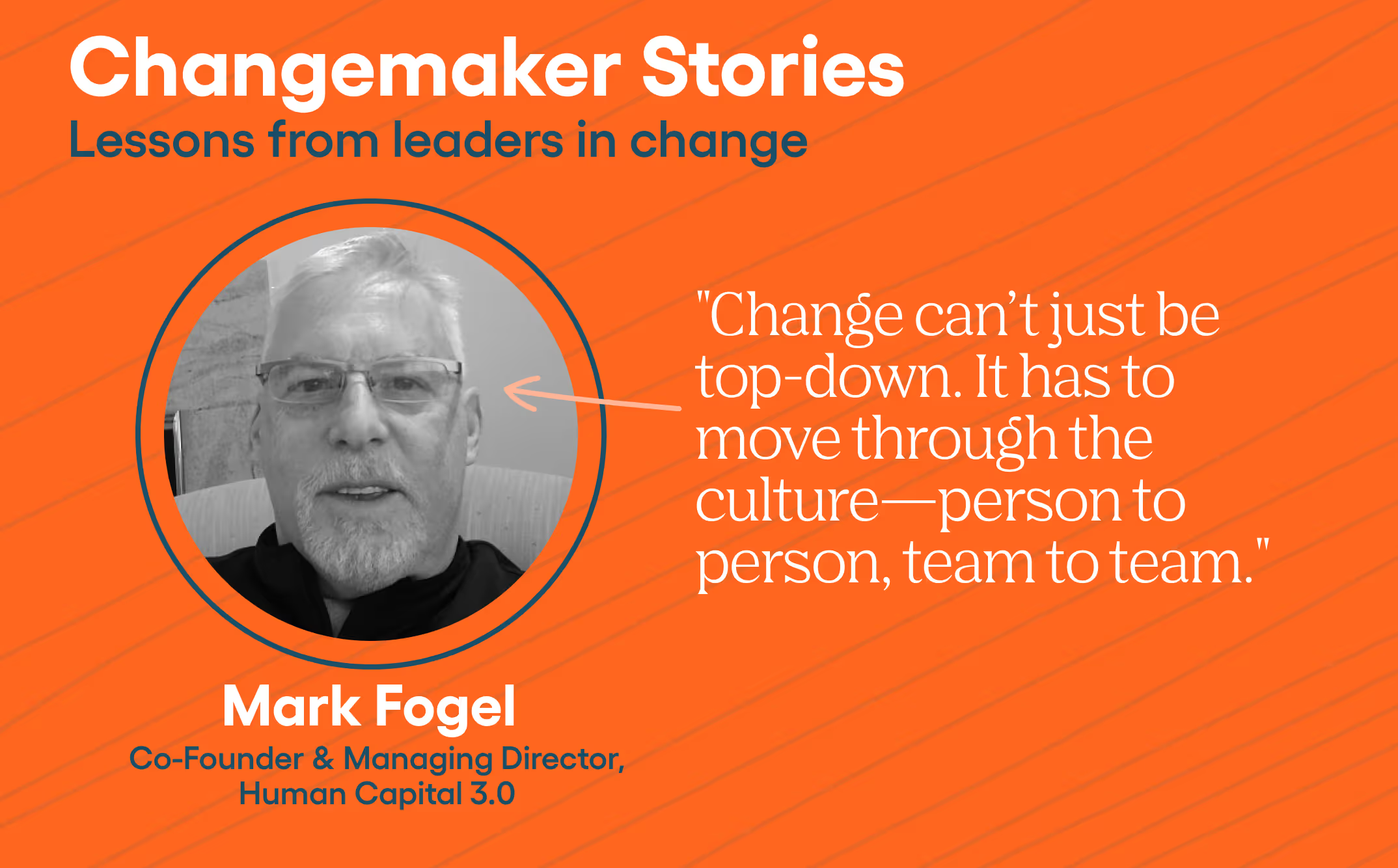

Welcome to Changemaker Stories from LOCAL – an ongoing series of personal interviews with leaders driving change across every industry and discipline. Because change shouldn’t mean going at it alone.
Mark Fogel doesn’t just study workplace culture—he measures it, decodes it, and helps companies turn it into a driver of transformation. As a longtime CHRO, college professor, and organizational consultant, he’s spent years digging into the data behind employee sentiment, behavior, and performance. His experience spans industries and organizational types, supporting everyone from C-suite leaders to frontline teams in figuring out how to listen better—and lead smarter.
His perspective is grounded in research and made real by hands-on insight. He works closely with HR leaders, C-suite executives, and employees alike to unpack what’s really happening inside the culture—and what needs to shift for change to stick. It’s not just about launching an initiative. It’s about embedding change in the way people think, act, and relate to one another.
You can’t deliver a new culture with a memo. People need to understand what the change means for them in their day-to-day. That’s what often gets missed. Leaders assume that once they’ve said the words, the message has landed. But most of the time, employees are still waiting for proof. They’re looking for consistency—are you really going to keep showing up this way? Can I trust it? Can I trust you?
Middle managers are often the most powerful—and overlooked—lever for cultural change. They’re the bridge between the strategy and the frontline. If you don’t bring them along, the message gets lost. But if you train them well and equip them with the right support, they become your culture carriers. That’s where the real behavior change happens. And yet, so often, we see middle managers being left out of the change conversation until it’s too late. We try to build programs that empower and prepare them to lead, not just follow.
When we analyze culture, we always start by identifying the friction. Where do people feel stuck? Where do they see gaps between what’s said and what’s done? That’s where the signals are. The temptation is to start with what leaders want the culture to be. But real insight comes from asking employees: what’s getting in the way?
We often use a mix of survey data and direct interviews to map these cultural pain points. In one company, employees kept naming “accountability” as a missing value. On the surface, it sounded like an HR issue—but when we dug deeper, it turned out that leaders weren’t following through on basic decisions. That inconsistency bred distrust, which filtered down to performance.
Sometimes, listening is the most strategic move you can make. We worked with one company where turnover was high and engagement was low. Instead of launching a new initiative right away, we helped them go deep on listening. We interviewed employees, ran surveys, and mapped hotspots across the business. What we learned changed everything—about how managers were showing up, how decisions were being made, and what really mattered to their people.
“Real insight doesn't come from what leaders want the culture to be—it comes from where employees feel friction."
Data can help you find the truth—but it’s only as good as your willingness to act on it. The companies that succeed aren’t just the ones who collect the most data. They’re the ones who say, “Okay. We hear you. And here’s what we’re going to do about it.” That builds trust. And trust is the foundation for every successful transformation.
That’s why we don’t just hand off reports. We co-create action plans. We work with teams to figure out, “What are the one or two changes you can make today to show employees you’re serious?” Big transformation doesn’t always start with big moves. It starts with visible ones.
My advice for anyone leading through change: don’t overcomplicate it. Start with behavior. What are you asking people to do differently? What kind of leadership are you rewarding? What signals are you sending—intentionally or unintentionally? When you clarify the behaviors you want to see, and you reinforce them consistently, change starts to take root.
Because culture isn’t what’s written on the wall. It’s what people do when no one’s watching.